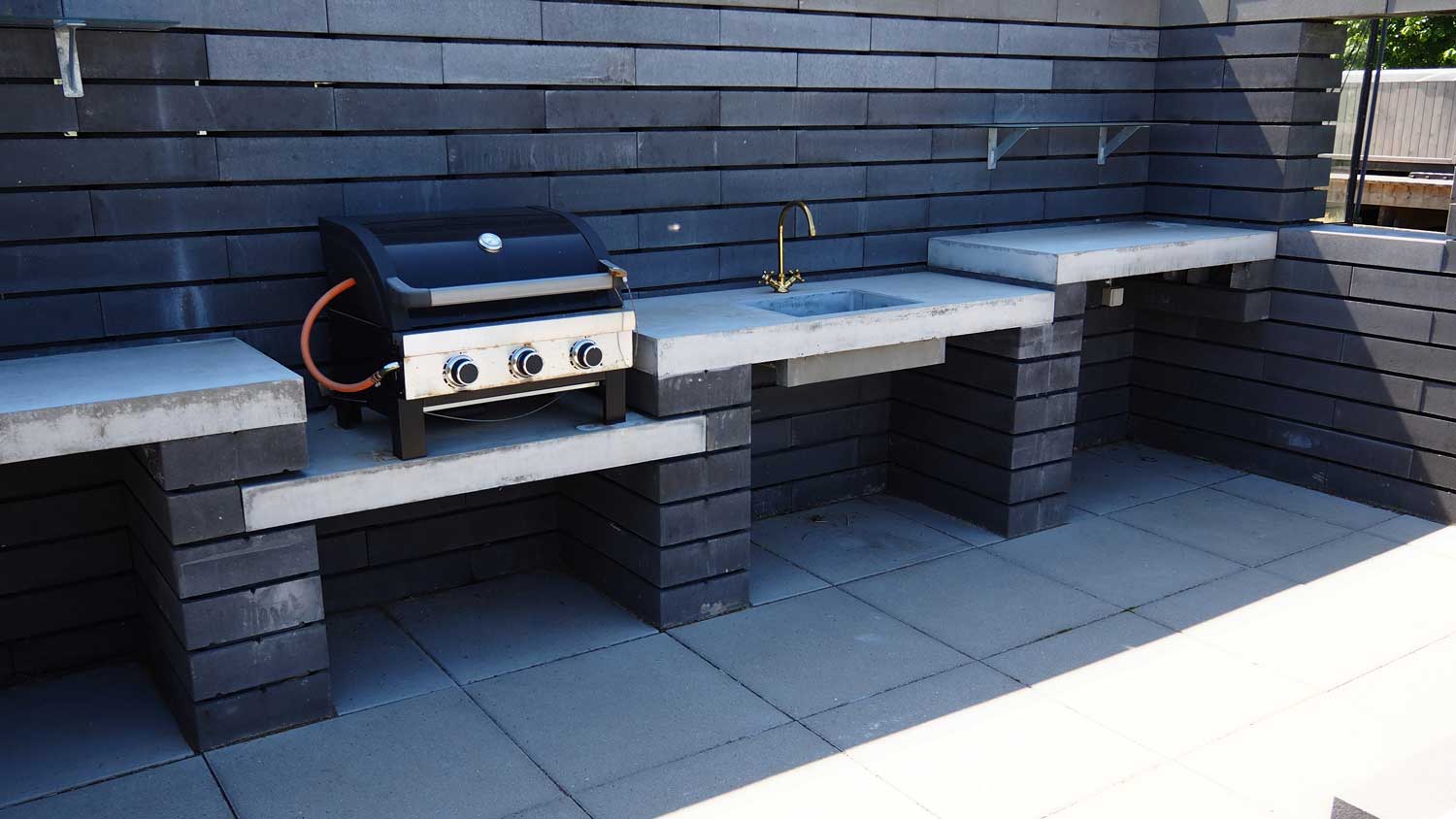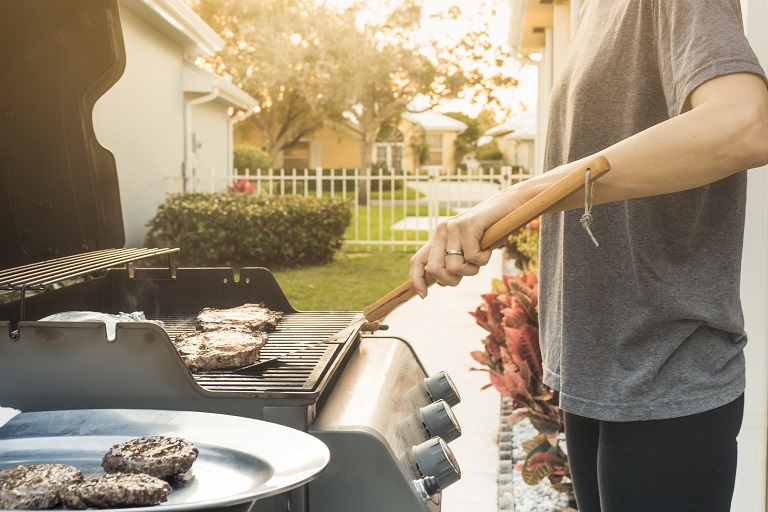
Wondering who to hire for gas grill installation? See which pros to call, the steps they follow, and how to ensure a safe, code‑compliant hookup.
Gas grill installation cost ranges from $100 to $1,500, with a national average of $700. Main factors include grill type, labor, gas line length, and add-ons.


Gas grill installation cost covers connecting your grill to a gas source and ensuring safe operation.
The main cost factors include grill type, gas line length, and labor charges.
Investing in professional installation adds value by protecting your home and ensuring code compliance.
Upgrades like custom grill islands, covers, or smart features can raise your overall budget.
Remember to factor in permit and inspection fees, which can add to your total project cost.
Gas grill installation cost averages $700, with most homeowners spending between $200 and $1,200. Costs vary based on grill type, labor, and gas line requirements. Expect to pay more for built-in grills or if you need a new gas line run. Installation is often priced per project, not per square foot.
Whether you’re upgrading your outdoor cooking space or replacing an old grill, understanding these costs helps you budget wisely for a smooth, safe installation.
Several factors influence the cost of gas grill installation, including the type of grill you choose, the materials used, and the brand. Let’s break down what makes up the price you’ll pay.
There are several common types of gas grills, each with its own installation considerations:
Freestanding grills are the easiest to install, often requiring only basic connections.
Built-in grills, integrated into an outdoor kitchen, demand more work, such as masonry, cabinetry, and dedicated gas lines.
Portable gas grills have minimal installation needs, while conversion kits allow you to adapt a propane grill for natural gas.
Natural gas grills need a direct gas line, while propane grills use refillable tanks or may require a conversion. The complexity of installation impacts both the time and labor required.
| Grill Type | Description | Average Installation Cost |
|---|---|---|
| Freestanding | Movable, stand-alone grill | $200–$400 |
| Built-in | Permanently installed in an outdoor kitchen/island | $500–$1,200 |
| Portable | Small, lightweight, often tank-connected | $100–$250 |
| Conversion kit | Converts propane grill to natural gas | $100–$300 |
The size of your grill also affects the installation cost. Larger grills with expansive cooking areas or higher BTU (British Thermal Unit) output often need sturdier support and more robust gas lines. This can increase labor time and material costs.
The materials used in your grill’s construction influence both installation and long-term durability. Stainless steel grills are popular for their resistance to rust, but they can be heavy, sometimes requiring additional support or specialized mounting hardware. Cast aluminum is lighter and easier to handle, but it may require additional protection from the elements.
Premium materials and finishes may call for custom installation steps, which can increase labor time. Accessories, such as insulated jackets or mounting brackets, specific to certain materials, can add to your overall cost.
Brand reputation and features can impact your installation cost. Well-known or luxury brands often include advanced features, such as infrared burners or smart controls, which may require extra setup. Some brands offer comprehensive warranties and require certified installers, which can raise service fees. While a reputable brand may mean higher upfront costs, it can also provide peace of mind and better long-term support.
Let’s look at the main expenses that make up your total gas grill installation cost, from labor to delivery and add-ons.
Most gas grill installations are handled by licensed plumbers, gas fitters, or general contractors. Minimum service fees for local gas grill installers often start at $100 to $200, while hourly rates can range from $50 to $150, depending on your region. Urban areas and high-demand markets tend to have higher rates.
The complexity of the job—such as running a new gas line, trenching, or pulling permits—can add hours to the project. Standard installations take two to four hours, while more complex setups may require a full day.
Delivery costs depend on the size and weight of your grill, distance from the retailer, and whether special handling is needed. Some retailers include delivery with the purchase, but others charge an additional $50 to $200. Rural or hard-to-reach locations may see higher fees, especially for large built-in grills.
Removing your old grill or outdoor kitchen components can add $50 to $150 to your bill. Some installers bundle this with installation, while others charge separately. If your old grill contains hazardous materials, you might also face environmental or recycling fees.
Many homeowners choose add-ons to enhance their outdoor kitchen experience. Extending the gas line, installing a shut-off valve, or adding gas pressure testing can each add $100 to $300 to the cost.
Custom grill islands, rotisserie kits, lighting, and smart features can increase your costs by several thousand dollars, depending on complexity. Remember to budget for permit and inspection fees, which can range from $50 to $200.
Beyond installation, there are ongoing and potential future costs to keep in mind.
Most grills come with a manufacturer’s warranty, covering defects in materials or workmanship. Some installers offer additional protection plans or extended warranties, which may cover labor or accidental damage for an added fee of $50 to $200. Review what’s included, as coverage can vary widely.
Your choice of fuel—natural gas or propane—affects ongoing expenses. Natural gas is less expensive per use, but requires a utility connection. Propane tanks cost more per refill but offer flexibility. Some gas utilities charge connection or minimum usage fees, so check with your local provider. Energy-efficient grills can help lower your monthly fuel costs over time.
Routine maintenance keeps your grill running safely and efficiently. Tasks include cleaning burners, checking connections, and replacing worn parts. DIY maintenance supplies may cost $20 to $50 per year, while professional servicing runs $100 to $250 annually. Regular upkeep helps prevent costly repairs and extends your grill’s lifespan.
Common gas grill repairs include burner replacements, regulator repairs, and ignition system fixes. Costs depend on parts and labor, but are manageable for standard issues.
| Repair Type | Description | Average Repair Cost |
|---|---|---|
| Burner replacement | Replace damaged or clogged burners | $75–$250 |
| Regulator repair | Fix faulty gas regulator | $50–$150 |
| Ignition repair | Repair or replace ignition system | $75–$200 |
| Gas line leak fix | Locate and repair gas line leaks | $150–$350 |
If you could avoid paying for labor and instead install your gas grill yourself, you’d save an average of $700, and potentially even more if you also need a propane tank installed or a new gas line run from the street. However, installing a gas grill is not something you should do yourself, as it’s dangerous and often illegal to DIY.
Hiring a local gas grill installer to get the job done is undoubtedly more expensive, but there are some crucial benefits you’ll enjoy when you outsource the work.
In most municipalities, it’s illegal for anyone other than an unlicensed plumber to work with gas lines.
DIY mistakes can be extremely costly, resulting in major explosions, severe personal injury, death, and total loss of property.
Professionals can install safety components to detect and prevent gas leaks, saving you money and keeping you and your family safe.
Pros can run gas lines from the street, so they make gas grill installation possible even if you don’t already have a gas connection.
You should always have a professional tackle any work with a gas line or propane tank, but there are some things you can do to prepare if you want to have a hand in getting the project done.
Clear the outdoor area of furniture, shrubs, and debris before your pro arrives to ensure easy access.
Plan out the route for the gas supply line to travel from your main gas supply to your grill, and clear that area, as well.
Call 811 or have a property survey completed to identify any other underground utility lines before trenching.
Deliver the grill to your home and move it near the installation area to prepare for the connection.
Deciding whether to repair or replace your gas grill depends on several factors. If your grill is under warranty, has minor issues, or is less than five years old, repairs often make sense. Use the 50% rule: if repair costs exceed half the price of a new grill, replacement is the better investment.
Gas grills last seven to 15 years with proper care. Signs it’s time to replace include frequent repairs, major rust, or outdated safety features. Replacing a grill—including installation—averages $700, while most repairs cost $75 to $350.
Looking to keep your gas grill installation cost under control? Try these strategies:
Schedule installation during off-peak seasons for better rates.
Compare quotes from multiple licensed professionals.
Purchase the grill and installation as a package for potential discounts.
Opt for standard models or fewer add-ons to reduce costs.
Perform simple prep work (e.g., clearing the area) yourself.
Maintain your grill regularly to avoid costly repairs.
Measure the distance from your main supply to your installation site and relay that to your pro for an accurate price.
Decide if you want or need safety measures, like gas leak detectors, to prevent leaks and related problems.
Know whether or not you have natural gas or propane on your property, and decide if you need new tanks or lines installed for the grill you want.
Tell your pro the model of grill you’re getting in case they need to prepare by purchasing special fittings.
Home is the most important place on earth, which is why Angi has helped more than 150 million homeowners transform their houses into homes they adore. To help homeowners with their next project, Angi provides readers with the most accurate cost data and upholds strict editorial standards. We extensively research project costs to develop the pricing data you see, so you can make the best decisions for you and your home. We rely on reputable sources, including the U.S. Bureau of Labor Statistics, academic journals, market studies, and interviews with industry experts—all to ensure our prices reflect real-world projects.
Want to help us improve our cost data? Send us a recent project quote to [email protected]. Quotes and personal information will not be shared publicly.